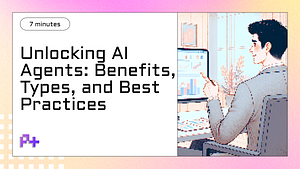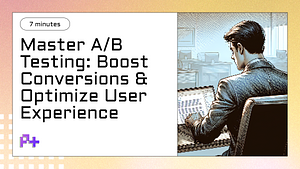Summary
- 1. What is an AI Text Generator and How Does It Work?
- 2. Benefits of Using an AI Text Generator for Your Content Needs
- 3. How to Effectively Use an AI Text Generator: Tips and Best Practices
- 4. Common Limitations and Considerations When Using AI Text Generators
- 5. Frequently Asked Questions About AI Text Generators
1. What is an AI Text Generator and How Does It Work?
An AI text generator is a sophisticated software tool that employs artificial intelligence algorithms to create written content automatically. These generators leverage natural language processing (NLP) and machine learning techniques to understand and mimic human language. By analyzing vast amounts of text data, an AI text generator can produce coherent and contextually relevant sentences, paragraphs, or even entire articles. This technology is increasingly being utilized across various industries, from marketing to education, to streamline content creation and enhance productivity.
The core functionality of an AI text generator hinges on its ability to understand context, grammar, and style. When a user inputs a prompt or a specific topic, the AI algorithm processes this information and predicts the most suitable words and phrases to follow. It does this using models trained on diverse datasets, which helps the generator learn the nuances of language. For instance, some advanced models, like OpenAI's GPT series, can not only generate text based on the given input but also adjust the tone and style according to user preferences, making them incredibly versatile for different writing needs.
AI text generators offer numerous advantages, such as saving time and reducing the burden of writer's block. They can produce high-quality content at a fraction of the time it would take a human writer, making them invaluable for businesses looking to maintain a consistent online presence. However, while AI-generated text can be remarkably accurate and fluid, it’s essential for users to review and edit the output to ensure it aligns with their brand voice and messaging. Overall, an AI text generator is a powerful tool that can enhance content creation, allowing users to focus more on strategy and creativity while leveraging technology to handle the writing process.
2. Benefits of Using an AI Text Generator for Your Content Needs
In today’s fast-paced digital landscape, businesses and content creators are constantly seeking innovative ways to enhance productivity and engagement. One of the most effective tools at their disposal is an AI text generator, commonly referred to as an AI texter. The primary benefit of utilizing an AI texter is its ability to produce high-quality content quickly and efficiently. With advanced algorithms and machine learning capabilities, these tools can generate articles, blog posts, social media updates, and marketing copy in a fraction of the time it would take a human writer. This not only saves valuable time but also allows businesses to scale their content production without compromising on quality.
Another significant advantage of using an AI text generator is its ability to assist in idea generation and brainstorming. Often, content creators face writer's block or struggle to come up with fresh angles for their topics. An AI texter can provide numerous suggestions, outlines, and even complete drafts based on a few keywords or prompts, thereby igniting creativity and expanding the range of possibilities for content. This feature is particularly beneficial for marketers and brands looking to keep their messaging dynamic and relevant in an ever-changing market landscape.
Furthermore, AI text generators are designed to optimize content for SEO, making them invaluable for online visibility. These tools can analyze trending keywords and incorporate them seamlessly into the generated text, ensuring that the content ranks well in search engine results. By leveraging an AI texter, businesses can not only create engaging and informative material but also enhance their chances of attracting organic traffic. In summary, the benefits of using an AI text generator extend beyond mere content creation; they encompass efficiency, creativity, and optimization, making it a smart choice for anyone looking to elevate their content strategy.
3. How to Effectively Use an AI Text Generator: Tips and Best Practices
Effectively using an AI text generator can significantly enhance your writing process, whether you’re crafting articles, social media posts, or marketing copy. To get the most out of an AI texter, start by clearly defining your objective. Knowing what you want to achieve allows the AI to generate text that aligns with your goals. For instance, if you need content for a blog post, specify the tone and style you’re aiming for, whether it’s informative, casual, or persuasive. This context helps the AI produce relevant and engaging content that resonates with your audience.
Another best practice is to provide the AI with specific prompts or guidelines. Instead of a vague request like “write about technology,” you might say, “generate a 500-word article on the benefits of AI in education.” This level of detail not only enhances the quality of the output but also ensures that the generated text covers the necessary points. Additionally, don’t hesitate to experiment with different prompts and adjust them based on the responses you receive. This iterative process can lead to more refined and impactful results, allowing you to harness the full potential of your AI texter.
Finally, while AI text generators are powerful tools, it's essential to review and edit the output. An AI can provide a solid foundation, but human oversight is crucial to ensure accuracy, coherence, and a personal touch. Adding your unique insights and style not only enhances the quality of the content but also helps in maintaining authenticity, which is vital for building trust with your audience. Remember, the goal is to use the AI texter as a partner in the writing process, enhancing your creativity while ensuring that the final product reflects your voice and meets your readers' needs.
4. Common Limitations and Considerations When Using AI Text Generators
While AI text generators, often referred to as AI texters, have revolutionized content creation, they are not without their limitations and considerations. Understanding these constraints is crucial for users looking to leverage this technology effectively. One major limitation is the potential for inaccuracies or misleading information. AI texters rely on vast datasets to generate content, but if the data is flawed or biased, the output can reflect those issues. This underscores the importance of human oversight; users must fact-check and refine the generated text to ensure accuracy and relevance.
Another consideration is the lack of context and emotional intelligence in AI-generated content. While AI texters can produce text that is grammatically correct and coherent, they may struggle to capture nuances, tone, and the specific emotional resonance that human writers can provide. This can be particularly problematic in fields like marketing or storytelling, where connecting with the audience on a deeper level is essential. Therefore, integrating human creativity and insight alongside AI-generated content can lead to a more compelling and effective final product.
Lastly, ethical implications and originality concerns should not be overlooked when using AI texters. As these tools become more prevalent, questions arise regarding copyright and the ownership of generated content. Additionally, users must be cautious about over-reliance on AI, as it may lead to a homogenization of content, making it challenging for brands to stand out in a saturated market. To navigate these issues, it’s advisable for users to maintain a balance, employing AI text generators as a supplementary tool rather than a complete replacement for human creativity and expertise. By being aware of these limitations and considerations, users can harness the power of AI texters more effectively and responsibly.
5. Frequently Asked Questions About AI Text Generators
As the use of AI texters becomes increasingly prevalent in various sectors, many users have questions about their functionality, effectiveness, and best practices. Here are some of the most frequently asked questions about AI text generators, along with comprehensive answers to help you navigate this evolving technology.
One common question is, How does an AI texter work? AI text generators utilize advanced machine learning algorithms and natural language processing (NLP) techniques to analyze vast amounts of text data. They learn patterns, context, and language nuances, allowing them to generate coherent and contextually relevant content. Users can input prompts or keywords, and the AI texter will produce text that mirrors human writing, making it suitable for tasks ranging from content creation to customer support. Understanding this underlying mechanism can help users leverage AI text generators more effectively, ensuring they receive the most relevant and high-quality output.
Another frequently asked question pertains to the quality of content produced by AI text generators. Many users wonder, Can AI-generated text match human writing? While AI texters have made significant strides in producing high-quality, engaging content, they may still struggle with creativity, emotional depth, or specific industry jargon. Therefore, it's crucial for users to review and edit the AI-generated text to ensure it aligns with their voice and brand. Additionally, incorporating human oversight can enhance the final output, making it more relatable and impactful for the target audience. By understanding these nuances, users can better utilize AI text generators to complement their writing processes rather than replace them.



